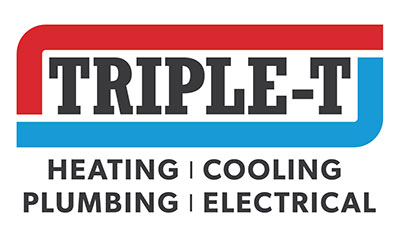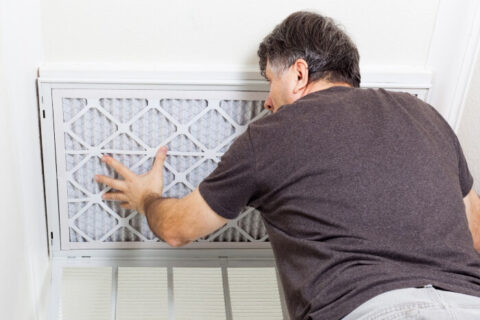Getting Your Air Conditioner Ready for the Summer Months
Summer is on its way, and lots of people are making their summer vacation plans. The kids will be out of school, the highway will beckon, and we’ll be off to the mountains or the beaches or perhaps the big city.
While planning summer activities can be fun, it’s important to think about your air conditioning system and how it’s going to perform during those hot months to come. You can prepare for a trouble-free season from your air conditioning system if you tackle some minor maintenance issues now.
Here are 10 steps you can take to make sure your AC does its best for you this summer.
-
Check, Clean, or Replace Air Filters.
Every home AC system has at least one air filter that needs to be changed regularly. The filter traps unwanted airborne pollutants so that they won’t be floating around in the air. Over time, the filters get clogged and can no longer function properly. If you can see through the filter, it probably has some life left in it, but if you can’t, it needs to be cleaned or replaced.
-
Clean the Inside Unit
To clean the inside unit, you should first turn off the circuit breaker that controls the system, then remove the access panel. Vacuum off the coils or use a foaming type cleanser designed specifically for that purpose. The cleanser will cause any debris on the coils to drop down into the drain pan. Next, use bleach and water to clean out the drain pan and the drainage line.
-
Clean the Outside Unit
There are several ways to tackle this job. The easiest way is to merely hose it off to get rid of any debris that might be on the fins or other components. If you want to go further, turn off the circuit breaker and remove the access panel. Clean the fins and if some are bent or flattened, a simple fin comb from your local hardware store can easily straighten them out.
-
Check the Coolant Lines
While you’re outside, pay attention to the coolant lines. The pipes you see coming out of your condenser unit are usually covered with foam insulation. Check to see if any of the insulation is frayed or cracked. Repair it if necessary by changing out the insulation or by using foam insulating tape, wrapped in a spiral pattern. The larger of the two coolant lines should feel cold to the touch. If it’s not, you may be low on refrigerant.
-
Clear Debris from Around the Outside Unit
For the condenser to work properly, the fan must have unrestricted air flow. Remove any loose debris from on top of or around the unit. If there are any bushes or tree branches close to the unit, they may need to be trimmed. A good rule of thumb is to clear a two foot space around the condenser unit, and if you don’t use a heat pump, cover the outside unit during the winter.
-
Check the Air Ducts
Inspect your air ducts for any cracks or leaks. If your air ducts are faulty, a great deal of your cool air will be lost. If you suspect that any of the ductwork is leaking, you should contact a professional for repairs.
-
Clean the Vents
In order for your AC system to work, there has to be clear airflow through the vents. Vacuum the vents, and make sure none of them are closed. If the vents are closed, it puts undue pressure on the system, and it won’t be able to work to its full capacity.
-
Check for Gaps in our Doors or Windows
You want all of your nice cool air to stay inside the house, so you should check for leakage around doors and windows. Replace any worn out weather stripping or seals and don’t forget any attic entry doors.
-
Thermostats
Upgrade your thermostat to a digital programmable thermostat. If possible, opt for a smart thermostat that can be programmed from a phone or tablet. With this unit, you can raise the temperatures in your home during those times when no one is home, and lower it when you return, all automatically. Studies have shown that this type of thermostat can save you 10-15% on your average power bill, so it can pay for itself in one season.
If you’ve leaving home for a few days, don’t turn off your AC. Rather, increase the temperature to a higher setting, but no higher than 84°. Turning it off or setting it too high can cause increased heat and humidity in your home that could damage your things with mold, warped wood, or pests. In addition, your system will have to work that much harder to bring the temperature back down when you return.
-
Schedule a Professional Inspection and Maintenance
Of course, one of the best ways to make sure your system is running at its capacity is to have it checked and serviced by a professional. This should be done at least once a year, and you should schedule it early in the spring, before the hot weather really starts up. Performing some preventive maintenance can assure your system is up to par and can help ward off any major repairs that might be needed in the future. If you’d like to schedule an inspection, please contact the experts at Triple T Plumbing, Heating and Air.
Established in 1974, we are a family-owned and operated business dedicated to serving our community in the area of heating and air conditioning, air quality services, and plumbing. With a commitment to customer satisfaction and over 40 years of hands-on experience, our team can be trusted with virtually any service challenge. Visit our website, or contact us at 801-307-4835 in Utah County or 435-258-9864 in Washington County.


